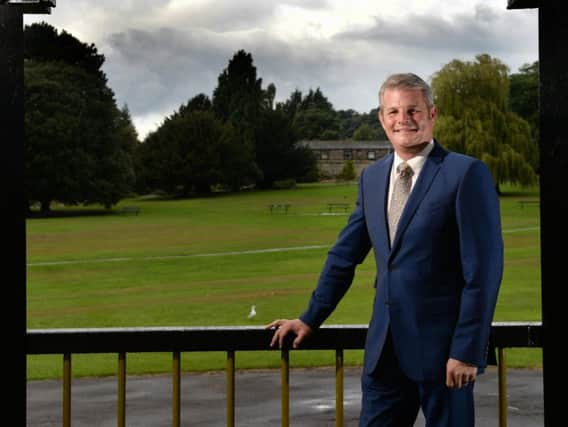Yorkshire MP Stuart Andrew to be held hostage in Buckingham Palace during Queen's Speech


Stuart Andrew, Conservative MP for Pudsey, Horsforth and Aireborough, also holds the role of Vice Chamberlain of Her Majesty's Household (Government Whip) - who is traditionally held up at the Queen’s London Residence while Her Majesty gives her speech in Westminster.
One of many traditions that come with the Queen’s Speech, this dates back to the troubled relationship between King Charles I and his Parliament.
Advertisement
Hide AdAdvertisement
Hide AdThe hostage - who is ex officio a member of the Royal Household - is left at the palace to guarantee the Monarch’s safe return.
As the honour has been given this year to Stuart Andrew he will this morning travel to Buckingham Palace to be symbolically locked up until the Queen returns.
It is understood Prince Philip used to enjoy telling the hostage: “If we don’t come back, you get shot.”
But the Daily Mail reported in 2016 that the Queen once jokingly corrected him and said the captive was only shot if she did not return.
Advertisement
Hide AdAdvertisement
Hide AdThe traditions surrounding the State Opening of Parliament and the Queen's Speech can be traced back to the 16th century.
Filled with pomp and ceremony, it marks the start of the parliamentary year, while the Queen's Speech sets out the Government's agenda and outlines its proposed policies.
The event is the only regular time when the three parts which make up Parliament, the Sovereign, the House of Lords and the House of Commons, come together.
The ceremony has existed in its current form since 1852, when the Palace of Westminster was rebuilt after the 1834 fire.
Advertisement
Hide AdAdvertisement
Hide AdThe ceremonial event will begin with the Queen's procession from Buckingham Palace to Westminster, during which she will be escorted by the army's Household Cavalry.
The 93-year-old monarch will enter Westminster through the Sovereign's entrance, located at the base of Victoria Tower, and move to robing room.
While wearing the Imperial State Crown and the Robe of State, she will lead the procession through the Royal Gallery to the House of Lords.
It is here that one of the more unusual traditions begins.
Black Rod, the House of Lords official, will summon the House of Commons to the Lords, but during this process the doors to the Commons chamber will be shut in her face.
Advertisement
Hide AdAdvertisement
Hide AdIt is a practice that dates back to the Civil War and is said to symbolise the Commons' independence from the monarchy.
Black Rod will have to strike the door three times before it is opened.
Members of the House of Commons then follow Black Rod and the Commons Speaker to the Lords chamber to listen to the speech.
While sitting on the throne in the House of Lords, the Queen will read the Queen's Speech, which is written by the Government.
Once the Queen leaves, Parliament will go back to work, with each house meeting separately to begin debating the content of the speech.